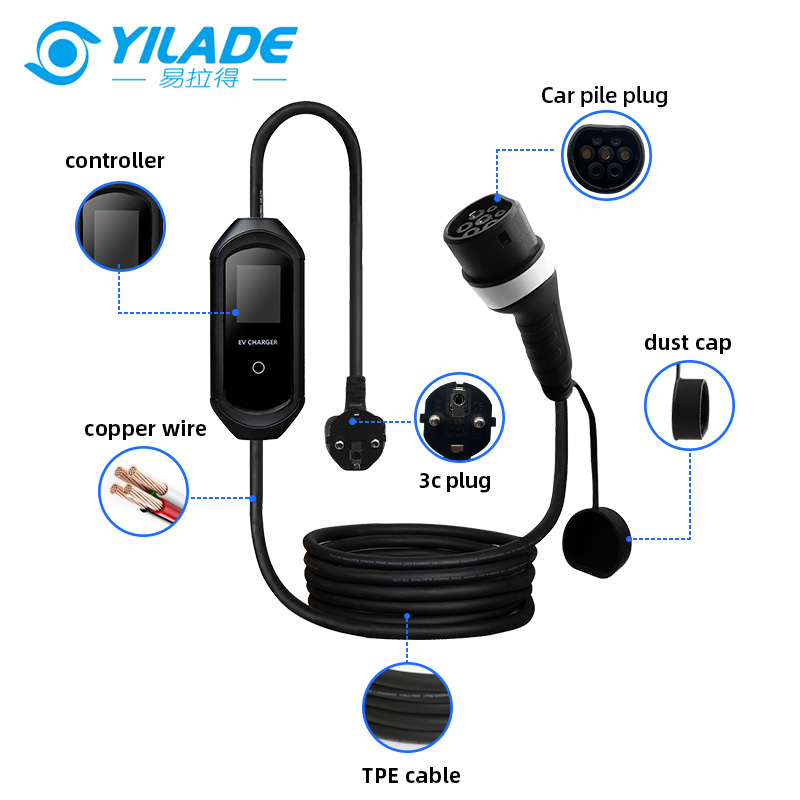
As the popularity of electric vehicles (EVs) continues to rise, so does the importance of understanding the charging process. One of the key factors that potential EV owners consider is the charging time required to replenish the battery. In this article, we will explore the various aspects of charging an electric vehicle using a portable EV charger and discuss the factors that affect the charging time.
1. Charging Speed of Portable EV Chargers
The charging speed of a portable EV charger depends on its power output, commonly measured in kilowatts (kW). Higher power output chargers can deliver more energy to the vehicle's battery, reducing the charging time. Most portable EV chargers have power outputs ranging from 3.3 kW to 7.2 kW, with newer models offering even higher power levels.
It is important to note that the charging speed also depends on the maximum charging rate supported by the EV itself. Some older EV models have lower charging rates, which can limit the charging speed even if a high-power portable charger is used.
2. Battery Capacity and State of Charge (SOC)
The time it takes to charge an electric vehicle also depends on the battery capacity and the current State of Charge (SOC) when charging begins. A larger battery capacity means more energy is required to fully charge the vehicle, resulting in longer charging times. Similarly, if the SOC is lower when charging starts, it will take more time to reach a full charge.
It's worth noting that most EVs have built-in charging limiters that slow down the charging speed as the battery approaches full capacity. This is done to prevent overcharging and protect the battery's longevity. As a result, the charging time required to reach 80% or 90% may be significantly shorter compared to reaching 100%.
3. Charging Infrastructure and Voltage
The available charging infrastructure and the voltage level used can also impact the charging time. Public charging stations and home charging setups typically offer different voltage options, such as 120V or 240V. Higher voltage levels can deliver more power, reducing the charging time. Public charging stations, often equipped with high-power chargers, can charge an EV faster than most home setups.
It's important to ensure that the portable EV charger you use is compatible with the available voltage level to optimize the charging time. Adapters may be needed to connect to different voltage sources, and using lower voltage than the charger's specification will significantly increase the charging time.
4. Environmental Conditions
The charging time of an electric vehicle can also be affected by environmental conditions. Extreme temperatures, both excessively hot and cold, can impact the charging performance. Very low temperatures can lead to reduced battery efficiency, resulting in longer charging times. On the other hand, extremely high temperatures may require the battery to be cooled before charging, which can also extend the overall charging time.
In addition, other factors such as the age and condition of the battery, as well as the charging cable's quality, can affect the efficiency of the charging process.
5. Charging Strategies to Reduce Time
There are several charging strategies that can help reduce the overall charging time for an electric vehicle:
Utilizing high-power portable EV chargers to maximize the charging speed.
Charging the vehicle when the battery SOC is relatively high to minimize the time required to reach a full charge.
Planning charging sessions in advance and taking advantage of fast-charging stations during longer journeys.
Optimizing the use of available charging infrastructure with higher voltage levels whenever possible.
Considering factors like ambient temperature and battery condition when scheduling charging sessions.
Conclusion
The time it takes to charge an electric vehicle using a portable EV charger depends on various factors, including the charger's power output, battery capacity, SOC, charging infrastructure, voltage, environmental conditions, and charging strategies. Understanding these factors can help EV owners plan their charging sessions efficiently and make the most of their electric driving experience.
